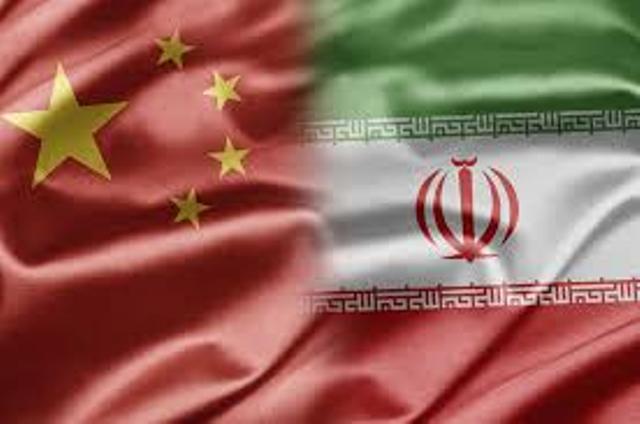
Trade transactions between the two Asian states experienced an increase in the first half of 2018, Majidreza Hariri told Iran Daily.
He said in the same period, Iran’s exports to China grew nine percent, adding that Iranian imports from the East Asian country declined by two percent in this six-month period.
Hariri noted that the two states’ trade balance is currently in favor of Iran as the Middle Eastern country’s exports to China constitute 55 percent of their bilateral transactions.
On the drop in the value of trade between the two states, he said the decline in oil purchases from Iran by South Korea and Japan will help increase Iranian crude exports to China.
On the other hand, Hariri added, the rise in international oil prices will also help increase the value of trade between Iran and China. “Petrochemicals as well as metal and non-metal minerals are among Iran’s major exports to China. The contract for the overseas sales of these items to China is valid until the end of 2018. China is interested in continuing such transactions with Iran.”
He noted that in case Iran fails to import the products it needs from other countries, it will definitely purchase them from China, particularly as our exports to China surpasses our imports from the country. Thus, to strike a balance in trade with the East Asian state, Iranian officials will preferably consider increasing imports from it.”
In terms of the value of oil trade, China currently ranks first among Iran’s trade partners, as it is the largest crude importer from Iran, Hariri said.
He added Iran exports an average of 650,000 barrels of crude oil to China per day.
“This figure accounts for more than 25 percent of Iran’s total oil exports.”
Some 25 percent of Iran’s total non-oil exports are also destined for China, he said, adding, this comes as China accounts for close to 26 percent of the non-oil exports to Iran.
“A quarter of Iran’s total international trade pertains to China.”
During the past three decades, the volume of trade between Iran and China has annually reflected a growing trend, he added.
Blaming fluctuations in the domestic forex market and global oil prices for the instabilities in the value of trade between the two countries, Hariri said, however, what is important is that the volume of trade has always followed an increasing trend.
He added, this is because oil, gas and petrochemicals constitute a major part of Iran’s exports to China.
Until 2014, trade between the two countries demonstrated increases in weight and value each year, reaching a record figure of $ 52 billion, Hariri said.
However, he added, after 2015, following the drop in global oil prices, trade between Iran and China suffered a $ 21-billion decrease, to stand at $ 31 billion.
“As of 2016, nevertheless, the value of transactions between Iran and China reflected a growing trend again, to $ 37 billion.”
Prior to the signing of the Joint Comprehensive Plan of Action between Tehran and P5+1 in July 2015, when Iran was under severe international sanctions, China provided Iran with the greatest and most effective assistance compared to other countries.
“At that time, China alone purchased half of Iran’s oil exports while Iran’s crude oil exports had dropped to one million barrels per day. In that period, China also played a very significant role [in helping Iran overcome the difficulties] by signing contracts to finance Iranian projects and implement joint projects with Iran.”
The second phase of unilateral US sanctions will be reimposed in November, Hariri said, adding Chinese top political and trade officials have explicitly announced that they would not abide by Washington’s sanctions and will continue their cooperation with Iran.
“This stance by Chinese officials, however, does not imply that trade ties between Iran and China are currently normal as our trade is faced with an abnormal situation at present, with China being no exception.”
At present, he said, China has a big share in the US market and seeks to maintain it.
Hariri noted that since Chinese companies have partners in the US and their stocks are sold in the US stock exchange markets, they are required to act cautiously.
Commenting on banking relations between the two countries, he said the Industrial and Commercial Bank of China (ICBC) is currently one of the world’s 10 biggest financial institutions that have extensive interactions with US banks. Hariri noted that the shares of this bank are also sold in the US stock exchange markets.
“Thus, major Chinese banks are required to impose limitations on their relations with their Iranian counterparts.”
He said about 10 years ago, by establishing a financial institution called ‘Kunlun Bank,’ a new way was devised for Iran and China to continue their banking cooperation under sanctions.
This bank, however, was sanctioned by the US, Hariri added.
He concluded that at the time being, Iran’s transactions with China are being conducted with minimal problems, compared to trade with many other countries.
Source: Iran Daily
9060**1396
Follow us on Twitter @IrnaEnglish
 solhkhabar | Peace International News Agency Peace International News Agency , Peace News , International Agency News of Peace
solhkhabar | Peace International News Agency Peace International News Agency , Peace News , International Agency News of Peace